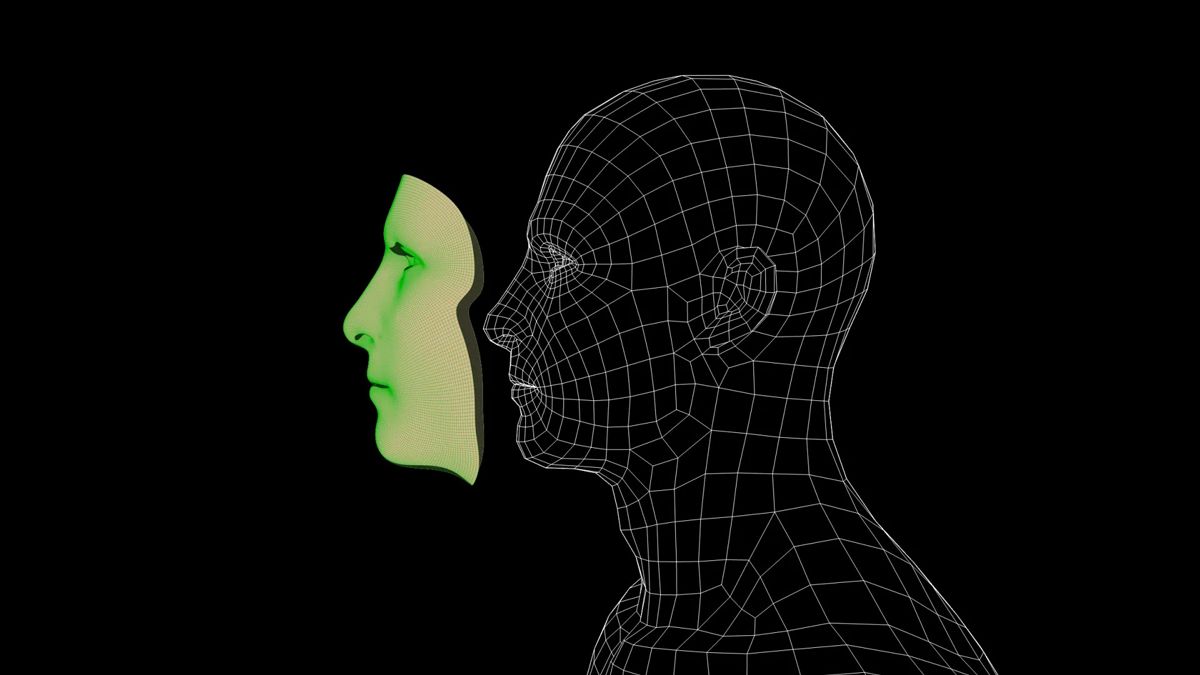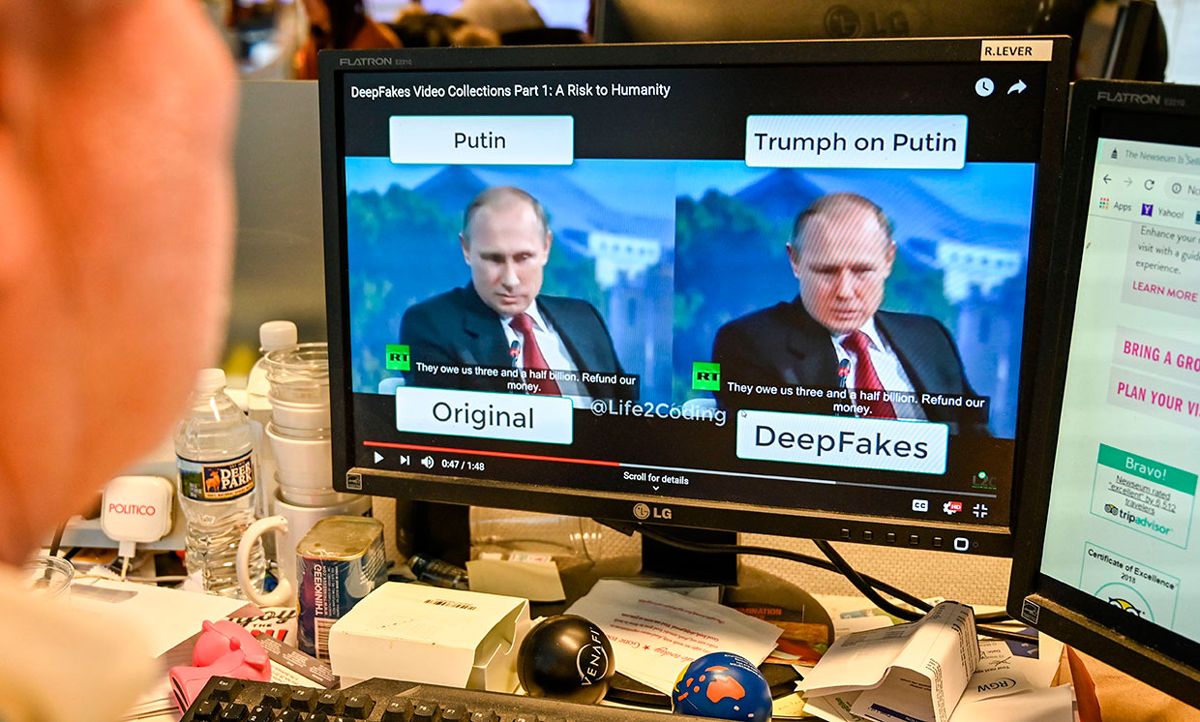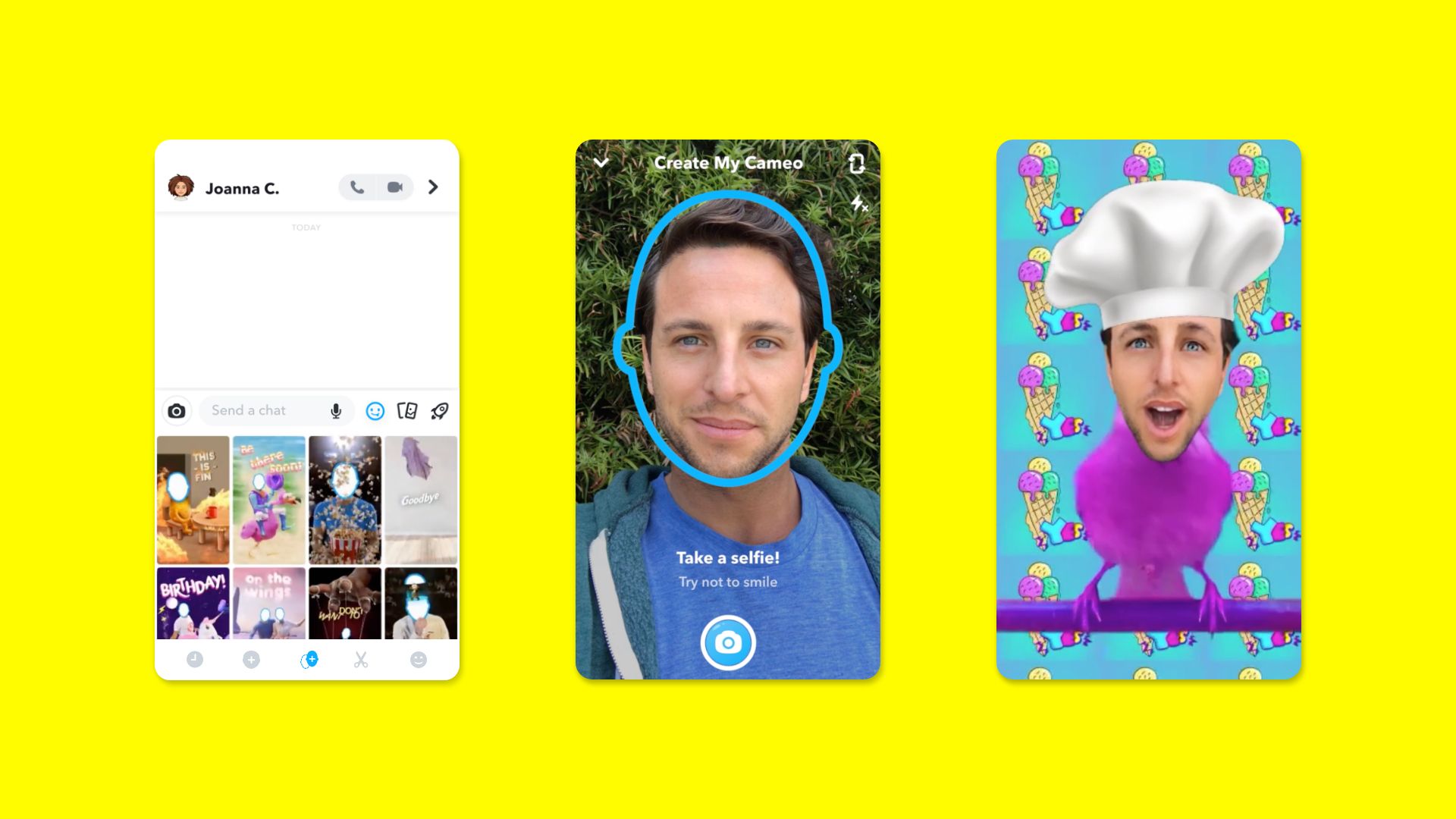Everything you need to know about Deepfake
Deepfake is one of the controversial technologies created on the basis of artificial intelligence to create fake photos and videos, which can be a great threat to society and be used for criminal and immoral purposes, as well as be used to create useful and useful content. In this article, we want to fully introduce you to this technology.
Artificial intelligence has made significant and rapid progress in recent decades and has been used in various fields. This revolutionary technology has greatly increased the quality and efficiency of many industries; Of course, since its inception, this tool has not always been used for positive and constructive purposes.
Sometimes new and useful technologies are used for criminal purposes, and artificial intelligence is no exception. Deepfake is considered one of the malicious activities that artificial intelligence has been abused in recent years.
Software and applications designed for deepfake, created on the basis of artificial intelligence, are trained to replace one person’s face with another person’s face. The victims of this unethical work are often celebrities and politicians.
In this article, we introduce you to Deepfake, how it works, its uses and dangers, how to recognize these contents, and also its future.
What is Deepfake?

In fact, this technology is intended to digitally imitate the actions being performed by a certain person, who did not do those actions at all, and those actions and movements are fake and simulated.
The word DeepFake is composed of two words Deep meaning deep and Fake meaning fake. The word Deep, which is related to artificial intelligence technology, refers to deep learning. Deepfake technology is used to replace or create different faces with full details, speech, and facial expressions.
History of Deepfake
This technology was not created by a specific person and the first steps of deepfaking were first carried out in the 1990s by educational institutions and then by a larger group of people. Although the software and applications used for deepfake content are not learning software; But news and information related to the creation of such software has created a lot of noise in social media.
One of the first cases of deepfake abuse happened in England. During this abuse, which was actually a fraud, the CEO of an English company active in the energy field was tricked by impersonating the voice of one of the company’s German bosses and deposited 220,000 euros into a third-party bank account.
How does Deepfake work?

There are several techniques for building deepfake software and applications using machine learning algorithms. To put it simply, several algorithms have been created in these softwares with the ability to create content based on input data. If we want to use the software to completely replace a person’s face or a part of it, we must first teach the software how to do this.
In the process of creating deepfake software, a very large amount of information is first provided to them, and the software uses this information to create content based on the new information it has created. This information is mainly based on Autoencoder and sometimes based on Generative Adversarial Networks or GAN for short. Let us learn more about these two methods.
Autoencoder
Self-Encoding Artificial Neural Networks are actually a set of self-monitoring neural networks that basically work on dimensionality reduction and also learn to copy the data they generate. These networks are data-driven; That is, they can compress data like they were trained to. Moreover, the output of the autoencoding neural network is exactly the same as its input.
This network consists of three parts, which include an encoder, a code and a decoder. The encoder compresses the input data and after the decoder decodes the compressed data based on the code, the code is generated.
There are different types of auto-encoder neural networks, among which are noise removal auto-encoders, deep auto-encoders, deep auto-encoders, contractive auto-encoders and convolutional auto-encoders or Convolutional Autoencoders and other cases.
In fact, these networks during the process of creating fake images and videos, to remove image and video noise (small grains on the image similar to TV thrush), to minimize errors when reproducing images or videos using different filters, compressing images and videos , data encryption and finally creating images and videos are used.
Hostile reproductive network
Adversarial generative networks are used to build models from input data sets. These networks learn information from input data that they use to generate new data. This network, which is actually considered a system, is trained by two separate neural networks that include a generator and a discriminator.
The generator extracts the rules and patterns in the input data set and is trained to reproduce them. The data generated by the generator is sent along with the real data to the detector for evaluation. In fact, the purpose of creating deception is the detection algorithm.
In the process of creating fake content with this method, training should continue until the detection algorithm can no longer distinguish fake data from real data. Increasing the difficulty of distinguishing fake data from real data means improving the level of system training. However, in general, the use of adversarial generative networks is more difficult and requires more resources compared to cryptographic artificial neural network to create fake and fake content, and it is often used to create images. No video.
How dangerous is deepfake?

Deepfake
Deepfaking is one of the most dangerous uses of artificial intelligence, and such a criminal technique is often used in the real world for defamation and fraud.
In some cases, deepfake content cannot be distinguished from real content. This technology can be used to cause great damage to people’s reputations or create the impression that a certain person has said something or done an action. In fact, deepfake can be likened to a very dangerous weapon in the hands of professional cybercriminals that can be used for any purpose.
How does deepfake affect our society?
The use of deepfake by dangerous people with sinister and destructive purposes can lead to many confusions and confusions. In 2018, a fake video of two men stealing a child in India was uploaded on WhatsApp. The widespread release of this video scared the people of India and they considered such an event a great threat to them.
Influential people, leaders, and big stars play an important role in any society and can influence many people in different ways; Therefore, providing false information by them can change people’s attitudes and encourage them to do certain things; Therefore, such an event can have unpredictable and possibly bad consequences.

Since the advent of these technologies, criminal activities such as publishing fake photos and videos of celebrities on the Internet have increased. It is even possible for politicians and senior officials of a country to become victims of deep fakes, and this has happened to several American presidents.
People who want to destroy such officials can destroy people’s trust in them and diminish their popularity by making fake videos containing unpleasant news and orders.
Is deepfaking illegal?

Due to the fact that only a few years have passed since the emergence of Deep Fake, its illegal and unethical uses have not yet been dealt with legally and seriously, and the legislators have not involved themselves in this issue; Even in some countries, no law has been established to deal with this technology. But in some countries, such as China, laws have been established to benefit from deepfake applications. The Cyberspace Administration of China has announced that it is illegal to create fake news using deepfakes.
In America, almost all states have enacted laws to deal with the creation of pornographic content using this technology. At the same time, bills have been proposed to prohibit the publication of those fake content whose publication can bring various negative consequences for the candidates for government positions in this country.
Applications of deep fake
The use of deepfake started with the publication of obscene content and many female celebrities fell victim to it. Politicians have since been targeted and, for example, fake videos showing Barack Obama insulting Donald Trump have been released. Another fake video shows Donald Trump mocking Belgian officials for joining the Paris climate accord.

Of course, not all uses of deepfake are limited to illegal ones, and its potential can be used legally and in useful fields. Currently, there are many applications for changing faces in the App Store and Google Play Store. Also, South Korea’s MBN news network uses deepfake technology to change the faces of its news presenters. Now let’s get to know some of the illegal and legal uses of deepfake.
Extortion
Unfortunately, as we said, Deepfake can easily be used by evil people as a tool for extortion and defamation; Because currently, a large number of people in society, especially the elderly, do not know about this technology and how it works.
Politics
As we said before, important politicians are among the most common victims of fake videos, and many people try to question the credibility of important politicians such as election candidates with fake videos.
In 2019, two media artists Francesca Panetta and Halsey Burgund from MIT created a fake video featuring former US President Richard Nixon. In that video, Richard Nixon announced that the Apollo 11 spacecraft mission had failed and none of its crew had returned from the moon. In this video, a real speech was used and the members of its production team spent six months to make it. At the same time, this research group uploaded a series of educational content on its website, which helped in how deepfake technology works, as well as how to distinguish fake and fake content from real content.
Art
In the field of art, deepfake is used to bring portrait images to life and make them speak. Russian researchers have used this technology to make da Vinci’s Mona Lisa speak. In the art museum “Salvador Dali” (The Dali Museum) in Florida, with this technology, the image of this artist has been made to speak, and the image of this artist speaks to the visitors of the museum. Such an interesting idea has been implemented to attract people.
Acting
In the production of expensive fantasy and science fiction movies, this technology is used to make changes in the actors’ faces or completely replace their faces. For example, in “Rogue One: A Star Wars Story”, deepfake has been used to fully recreate the faces of two characters in this movie, Princess Leia and Grand Moff Tarkin.
Movie making
Disney film studios are working on their own Deep Fake visual effects to reduce both the cost and time needed to create the desired characters as much as possible; Of course, these visual effects are not very efficient at the moment; Because implementing them with high-quality is only possible at low resolution and implementing them at higher resolutions requires more effort. These visual effects were also used to make Star Wars: Rogue One.
Social Networks
Although the new policies and policies of many social networks such as Facebook and Twitter have been created based on dealing with deepfake technology and banning fake content; But such content is still seen among the content published in some social networks. Snapchat has made it possible to use the face change feature in its camera app since 2016. TikTok has also invented a new technique that users can use to change their face in videos.

Misuse of fake identity
As we said before, one of the South Korean news channels uses deepfake technology to change the faces of its presenters, and in fact, by doing this, it replaces them with completely different characters. One of the alternate characters of the presenter accused some people of sympathizing with terrorist people, and finally it was not clear who behind that fake face made such an accusation against the people in question.
In 2017, a group of researchers and entrepreneurs developed a software called Synthesia with the ability to create fake visual and audio content with artificial intelligence capabilities, which allowed its users to create realistic videos with fictional characters.
How to recognize deepfake content
Just as artificial intelligence has caused the emergence of deepfake technology; Technologies that can be used to detect deepfake content are also based on artificial intelligence algorithms that are similar to the algorithms used to create deepfake content itself. These algorithms can detect features that are not present in real photos and videos.
At first, these algorithms could only recognize the fakeness of the videos by detecting the unusualness of people blinking in fake videos or not blinking, and if the blinking of people was also simulated in the videos, these algorithms were deceived; But later, their perception improved and they were able to detect fake blinks: Other signs of fake content include:
Unreal skin color or facial discoloration
Abnormal movements
Incoherence of words spoken by people with their lip movements or poor coordination between them
People’s faces and body postures are thinner than the background of the content
Abnormal exposure of content or other related problems
Extra pixels per frame
How to deal with deepfake
Several leading tech companies are working on their own methods to combat fake content, with Microsoft and Google providing datasets that developers can use to train their systems to detect deepfake content.
Some time ago, Facebook also started its partnership with Microsoft, Amazon Web Services and leading universities around the world to announce the Deepfake Detection Challenge in order to develop methods for detecting fake videos. The project was implemented in the form of a competition to find the best method or methods for detecting fake video, and the prize for the winning person was $500,000. The software methods to achieve such a goal, which involved approximately 3,500 participants, were open source and therefore other researchers could easily use them.
The Defense Advanced Research Projects Agency (DARPA) or DARPA, which is a government agency belonging to the United States Department of Defense, has created a project called MediFort, based on which DARPA and the American research organization SRI International (SRI International) have reached an agreement to develop methods Detects signature manipulated photos and videos.
Sensity also offers solutions for companies that want to protect themselves from the negative consequences of deepfake content abuse. Operation Minerva is another fake content detection tool, which is a system for detecting fake pornographic content and removing it.
Do biometric features help counter deepfakes?
Biometric features such as fingerprints and irises, which are created specifically for each person and are not the same, are one of the best ways to identify people. These features can also be useful for detecting fake content. Face recognition using artificial intelligence can also be a very useful tool to recognize such content.
The future of deepfake
Deepfake is still a nascent technology and a lot of promises have been made about it. Most people in society still do not know much about this technology, and its potential capabilities have not yet been fully discovered; However, there is still a lot of time left to fully understand the positive and negative effects of this technology in various fields, and in the future, more methods will be developed to deal with illegal abuses of this technology and control it more.
Naturally, this emerging technology also has its advantages and disadvantages like other technologies. On the one hand, this technology can cause irreparable moral, spiritual, and spiritual damage to prominent figures, but on the other hand, it can be used as a useful tool in the field of creating digital portraits, filmmaking, animation, and other similar fields.
Frequently Asked Questions about Deepfake
How is a deepfake created?
Deepfake is created with artificial intelligence technologies that replace people’s faces with fake ones.
Who was the creator of Deepfake?
This technology was not created by a specific person, but was first created by researchers of technological educational institutions and then made available to the general public.
How can we recognize a deepfake?
Some deepfake contents are unprofessionally made and it is easy to recognize them; But in some cases, it is difficult to recognize these contents without using software, and you can use software containing artificial intelligence algorithms. Such softwares are developed to detect errors and inaccuracies created during the creation of fake visual content.
What are the main artificial intelligence algorithms for creating deepfake content?
Deepfake is a technology created based on artificial intelligence deep learning algorithms. The method of self-encoding neural networks and adversarial networks are two important and main methods for creating such content.
How much deepfake content has been created so far?
No one is sure about this; But according to a report published by CNN in October 2019, there were at least 14,687 deep fake online videos in cyberspace











